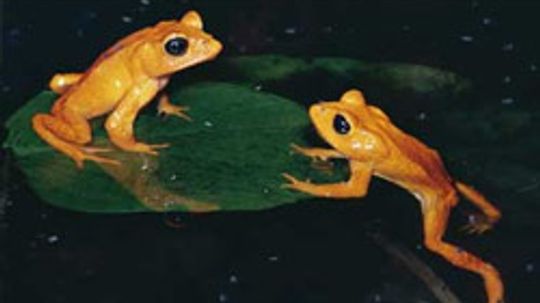Embarking on a journey to unravel the enigmatic world of amphibians requires a keen eye and an astute understanding of their distinctive characteristics. In this article, we will delve into the art of identifying these fascinating creatures, armed with multilingual vocabulary and a formalistic tone.
A Closer Look at Amphibian Identification
Amphibians, those captivating denizens of both land and water, possess unique traits that set them apart from other members of the animal kingdom. To identify these remarkable beings accurately, one must first familiarize themselves with their diverse physical attributes.
Their skin texture varies greatly among species; some boast smooth and moist skin while others exhibit rougher textures adorned with warts or bumps. Additionally, amphibians often possess distinct color patterns that aid in camouflage or serve as warning signs to potential predators.
Moving beyond appearances, another crucial aspect lies in observing their locomotion. While most amphibians are renowned for their ability to navigate through water effortlessly using webbed feet or powerful tails, certain species have adapted to terrestrial environments by developing strong limbs for hopping or crawling.
An essential characteristic distinguishing amphibians is their life cycle. Unlike other organisms who undergo metamorphosis during development stages such as larvae transforming into adults directly, amphibians typically experience a tadpole phase before transitioning into fully-formed individuals capable of surviving on land.
The Language Barrier: Multilingual Vocabulary for Amphibian Identification
In our quest to comprehend the intricacies surrounding these mesmerizing creatures across cultures and languages alike, it becomes imperative to embrace multilingual vocabulary specific to amphibian identification.
In Hokkien English accent parlance – spoken by many communities worldwide – frogs are referred to as “kek-kek,” while toads are known as “bua-bua.” Such linguistic nuances not only enrich our understanding but also foster a sense of inclusivity within the global community.
Furthermore, expanding our vocabulary to encompass scientific terminology enhances precision in communication. Terms like “anura” and “caudata” allow us to categorize amphibians into frogs and salamanders respectively, facilitating clearer discussions among experts and enthusiasts alike.
The Importance of Conservation Efforts
As we immerse ourselves in the captivating world of amphibian identification, it is crucial to acknowledge the pressing need for conservation efforts. Amphibians face numerous threats such as habitat loss, pollution, climate change, and disease outbreaks that have led to alarming population declines worldwide.
By actively participating in initiatives aimed at preserving their habitats and raising awareness about their ecological significance, we can contribute towards safeguarding these remarkable creatures for future generations. Together, let us strive towards a harmonious coexistence with nature’s most intriguing inhabitants – the amphibians.
In Conclusion
Embarking on an expedition into the realm of amphibian identification requires more than just visual observation; it necessitates an appreciation for their unique characteristics across languages and cultures. By honing our skills in multilingual vocabulary specific to these enchanting beings while advocating for their conservation, we can unlock a deeper understanding of this diverse group of organisms that bridge land and water.



